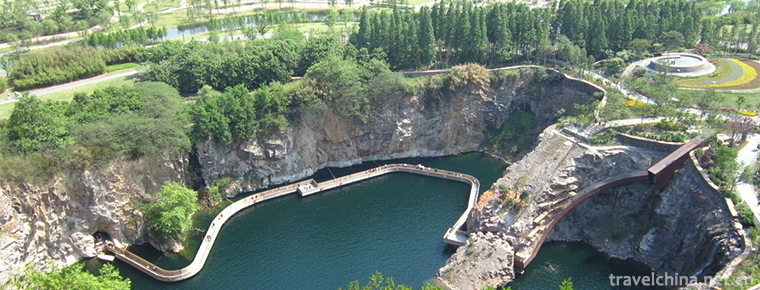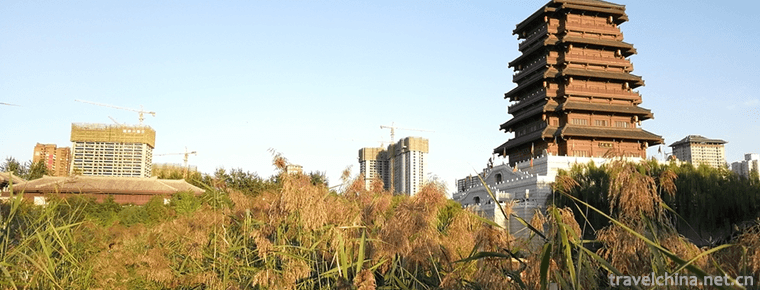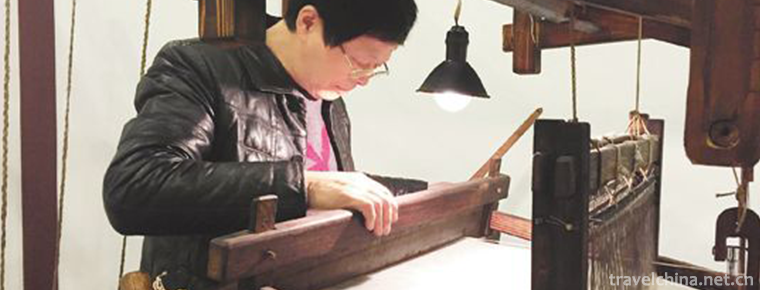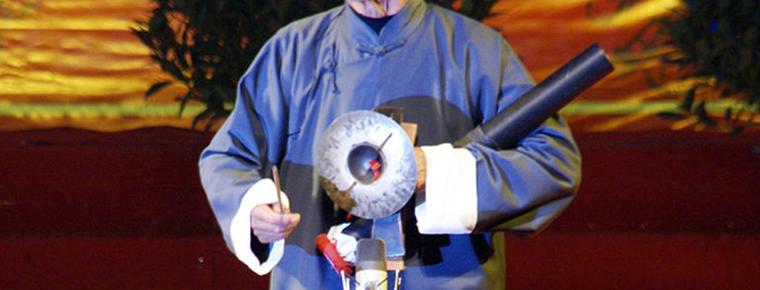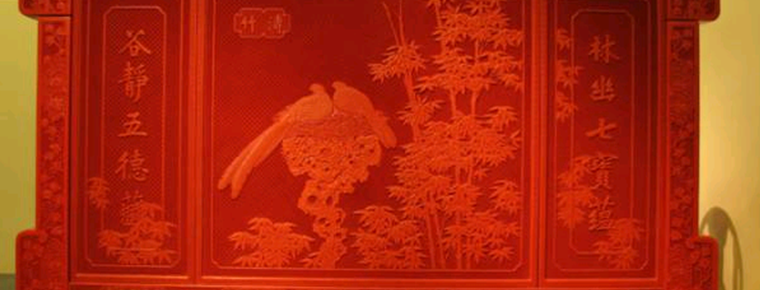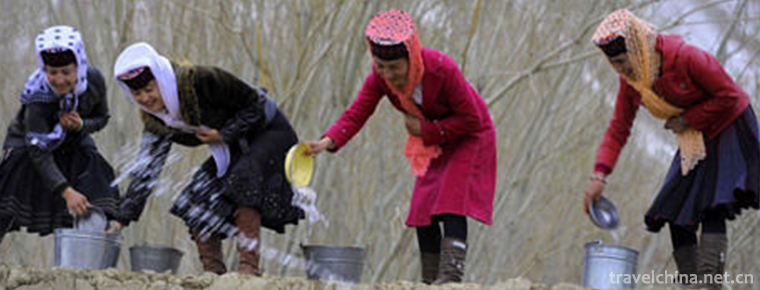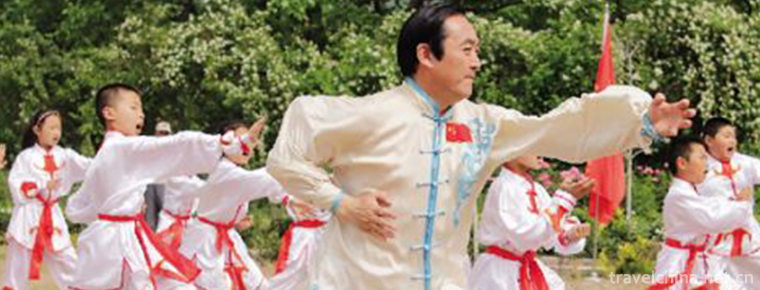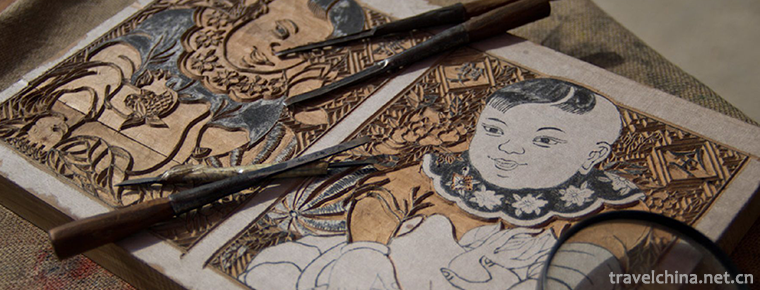Wang Guo Festival
Wang Guo Festival
Wangguo Festival is a festival for Tibetan farmers to celebrate a bumper harvest. It is popular in Lhasa, Shigaze, Shannan and other places in Tibet Autonomous Region. The time is between July and August of the Tibetan calendar every year. The specific date varies with the season of farming. It is usually held two or three days after the barley is ripe and the sickle is harvested. Therefore, the calendar of the Wangguo Festival is based on the township, which is collectively agreed by the villagers according to the local crop maturity.
Legend has it that as early as the end of the 5th century AD, King Bude Gongjian of Tibet consulted Yongzhongben Buddhist ancestors in order to ensure a bumper grain harvest. Buddha's decree was to let the peasants circle around the fields, led by people holding incense burners and elevated sticks, led by the Benedict who raised the sticks wrapped around Hada and the right leg of sheep, and led villagers holding barley or wheat ears around the first few circles of the land, and inserted various grain ears in granaries and shrines, praying for smooth weather and good harvest. Then have a big picnic. As soon as the festival is over, intense autumn harvest work will officially begin. The "Fruit Festival" is the greatest joy for Tibetan farmers after half a year's hard work. In Tibetan, "Wangguo Festival" means "field", "fruit" means "turning the circle", "Wangguo Festival" means singing and dancing around the harvest fields.
On November 11, 2014, Wangguo Festival was approved by the State Council and listed in the fourth batch of national intangible cultural heritage list.
Introduction to Festivals
"Wangguo" is a Tibetan transliteration meaning "turning around the earth". The Tibetan word "look" refers to the farming day, and the meaning of "fruit" refers to the turning of circles. The "look for fruit" Festival can be translated as "the turning of circles on the edge of fields".
Wangguo Festival has a history of more than 1500 years. It is a traditional festival for Tibetan farmers to celebrate their harvest. It is popular in Lhasa, Xigaze, Shannan and other places in Tibet Autonomous Region. The time is between July and August of the Tibetan calendar each year. The specific date varies with the season of farming. It usually takes one to three days after the Yellow barley ripens and the first two or three days before the sickle harvest. Therefore, the calendar of the Wangguo Festival is based on the township, which is collectively agreed by the villagers according to the local crop maturity.
Festival History
It is said that the "Wangguo Festival" has a history of more than 1500 years. According to the relevant documents of Tibet, as early as the end of the 5th century AD, water canals had been built in Yalong area, and wooden ploughs had been used to cultivate land. Agricultural production was relatively developed. At this time, in order to ensure a bumper harvest of grain, King Bude Gongjie of Tibet went to Dudu Duzhu.
Ask for a doctrine. According to Yong Zhongben's doctrine, the God teaches farmers to circle around the fields and ask for "Heaven" to ensure a bumper harvest. This is "expecting fruit". But in this period, "WangGuo" is not a formal festival, but an activity before harvesting sickles.
In the late eighth century, Tibet entered the prosperous period of Indian Buddhism represented by Ningma School, and the activities of "Wangguo" also took on the color of Ningma Sect. In the 14th century, Zongkaba, the founder of the Gelug sect, came to Tibet. By rectifying various sects in Tibet, the Gelug sect became the main sect in Tibet and occupied a dominant position. At this time, the activities of "Wangguo " infiltrated more of the color of the Gru school. With the continuous development of the times, the content and form of the festival are also changing.
Origin of Festivals
Legend has it that as early as the end of the 5th century AD, King Bude Gongjian of Tibet consulted Yongzhongben Buddhist ancestors in order to ensure a bumper grain harvest. Buddha's decree was to let the peasants circle around the fields, led by people holding incense burners and elevated sticks, led by the Benedict who raised the sticks wrapped around Hada and the right leg of sheep, and led villagers holding barley or wheat ears around the first few circles of the land, and inserted various grain ears in granaries and shrines, praying for smooth weather and good harvest. At that time, Tibetan people wearing various kinds of Tibetan robes and colored ribbons around their waists will wear colorful flags and carry respectfully the harvest pagoda made of barley ears and wheat ears. On the pagoda, white Hada will be tied, gongs and drums will be beaten, with good wishes, singing carols, turning around the ground and praying for a bumper harvest. Then have a big picnic. After the festival, intense autumn harvest work
It's officially started. The "Fruit Festival" is the greatest joy for Tibetan farmers after half a year's hard work. In Tibetan, "Wangguo Festival" means "field", "fruit" means "turning the circle", "Wangguo Festival" means singing and dancing around the harvest fields.
It is one of the longstanding and tireless desires to have the opportunity to witness the dance of "entertaining gods" in the Tibetan "Wangguo Festival". Although I know a little about "Wangguo Festival" from the data, I want to know the origin and evolution of the traditional "Wangguo Festival" and how people reward gods by dancing in ceremonies. The most reliable thing is to visit the scene and participate in festival activities on the basis of the data. For this reason, before the festival, we will do our best to inquire and interview information. Fortunately, the origin of "Wangguo Festival" has been found in the Calendar Algorithms. It is said that at the end of the 5th century AD, King Bude Gongjian of Tibet sought ways to bless his Buddha's harvest. The Bishop pointed out that the harvest would be granted by God if farmers were allowed to walk around the fields to be harvested and entertain God with dances. From then on, before harvesting each year, the monks of this religion, as the leader of the sacrificial procession, held high flags, held the "Dada" and the right leg of the sheep wrapped around Hada's sceptre, led the peasants holding barley ears in various villages and the women dressed in small flags and pots full of barley grains on their shoulders to line up and march around the farmland to "converge the land and pray for a good harvest". Move. During the vast march, people praised the gods and prayed for a good harvest with ceaseless slogans and chants. The first part of the "Watching Fruit Festival" was ended only when the "parade around the fields" team returned to the village and the wheat spikes and flags with the will of the gods were planted in barns or shrines.
The sacrificial ceremony of "Wangguo" activities in Tibetan agricultural areas was very simple before the middle of the eighth century. After the establishment of Huang religion in the second half of the eighth century, the "Wangguo" activities were added to the religious color and formed a set of joyful activities with religious sacrificial ceremonies. That is to say, from this time on, in order to wish a bumper harvest, including "parade around the fields" and "celebration" two parts of the content of the "Wangguo Festival", was included in the official festival of Tibetan agricultural areas.
The activity date of "Wangguo Festival" in Houzang Agricultural Region varies from 3 to 5 days, depending on the economic strength of each township. Activities can be organized by several townships or by individual townships. After contacting, they will be invited to participate in the "Wangguo Festival" held by Sima and Wangdui, not far from Shigaze City.
Festival Inheritance
National Celebration
Wangguo Festival was first popular in Shannan Agricultural Area. It has a history of more than 1500 years. The Tibetan word for Wangguo Festival means "turning the head", wishing a good harvest in agriculture and returning grain to warehouse. There are no fixed days for the Festival, which is usually held at the time of grain ripening. During the festival, men, women and children dressed in costumes, men holding "La Sang Da Jue", women carrying scriptures, holding "Da Da" (wrapped in wooden strips with colorful cloth strips), queuing to transfer crops, and then performing horse racing, Tibetan opera, or visiting relatives and visiting Linka. It's very lively.
In the countryside of Tibet, apart from the Tibetan calendar years, it is the Hope Fruit Festival. At the end of July, barley and winter wheat were golden in Shannan. Before opening the sickle, all villages and townships had to watch the fruit festival: performing Tibetan operas, visiting relatives, and the busy festival scene was everywhere. Even boatmen on the river took their own holidays to watch the fruit festival.
On the highway, men and women wear new clothes and dress up like New Year's Day. Five groups of people, seven groups, walk toward the county town. Old people and children are sitting on the carriage, happy; girls and young men, like to travel together, they carry barley wine, or butter tea, and carry a vegetable box, which are prepared for a big picnic at noon that day.
In the big playground of Gongga County Middle School, the Tibetan stage was set up two days earlier. A large white tent with a foot of 100 square meters was propped up in the middle of the playground, which was obviously for the purpose of sheltering the actors from the rain and the sun. The audience consciously surrounded the outer circle of the tent, and the people in front sat on the ground in an orderly manner. In order to make the festival a pleasant one, we consciously observe the discipline of the square. Those who come late and can't see clearly climb up to the branches and fences and look down comfortably.
For the busy peasants throughout the year, Watching Fruit Festival is a good opportunity to have a good holiday. Others are reluctant to spend their time entirely on eating, drinking, playing and enjoying. They use their holidays to visit relatives, gather firewood, engage in sideline business, or do what they want to do.
In Tibet, where agriculture and animal husbandry are the main economic sectors, during the Wangguo Festival, government organs are on vacation and cadres are busy organizing villagers'activities. Students in schools also prepare some entertainment programs to help the masses during the festival. They seldom have so many audiences to watch their performances, but of course they have to show their skills. Workers in township enterprises just emerged from the ranks of peasants are busy. Seventy-eight out of ten people in their families are peasants, and the leaders of enterprises are also taking vacations for workers at this time. Failure to do so seems contrary to public opinion. Therefore, in agricultural areas, the Hope Fruit Festival is not only a festival for farmers, but also a festival for the whole people.
Holiday wishes
"Wangguo Festival" is a festival for Tibetan people to wish a bumper harvest in agriculture. "Watch" means "field" and "fruit" means "turn around". "Wangguo" literally means "turning around".
"Wangguo Festival" is popular in agricultural areas. There are no fixed days, usually when the grain is ripe. It is customary to celebrate the festival before the arrival of the season of "King of Birds" - wild geese flying south. According to the arrangement of farming, the dates of the festival vary from place to place. For example, Lhasa begins with the solar calendar and the festival lasts for three or five days. Jiangzi, Rigaze and other places are in the middle of July of the Gregorian calendar. After the Watching Fruit Festival, the autumn harvest and autumn planting began to be tense.
Have a long history
The "Wangguo Festival" has a long history. It was first popular in Yalong Champagne (the Valley in the middle reaches of the Yarlung Zangbo River today). According to the "Calendar Algorithms" and other data, as early as the end of the 5th century AD, that is, in the period of Budgongjie, Yalong region has built canals, used wooden ploughs to cultivate land, and agricultural production is relatively developed. At this time, in order to ensure a bumper harvest of grain, Zamphu de Gongjie asked his teacher for a teachings. According to this teachings, the teacher taught farmers to circle around the fields and seek "Heaven" to ensure a bumper harvest, which is "Fruit Festival". However, in this period, "Wangguo" is not a formal festival, but a kind of sacrificial activities before harvesting sickles.
The earliest "expecting fruit" activities in Tibet were generally as follows: all villagers in villages began to march around the village's land. At the front of the team, the people holding the pillar incense and lifting the crossbar led the way, and then the wizard raised "Dada" (around Hada's stick) and the right leg of the sheep, meaning "harvest" and "harvest". Followed by the villagers holding barley and wheat ears. After the circle, the grain spikes are inserted in the barn or on the sacrificial platform, praying for a good harvest. Subsequently, entertainment activities were carried out, including wrestling, sword fighting and shuttle marking. These competitive competitions are mainly attended by Hercules, and the winners are awarded. Finally, the crowd sings and dances and has a good day.
The activity of "expecting fruit" guided by the doctrine of this religion has been developed until the mid-eighth century, that is, the period of Chisong Dezan. In the late eighth century, Ningma sect, headed by Wujian Baima, the leader of Lotus Religion, flourished. The activities of "Wangguo" also took on the color of Ningma sect. Envoy chanting is the characteristic of Ningma School. At this time, the hope fruit activity must be conducted by the magician to bless the harvest. After the 14th century, the Gru religion became the main religion in Tibet and occupied a dominant position. At this time, the "Wangguo" activities will permeate more Gelug color, for example, in front of the parade, to raise Buddha statues, recite scriptures. At that time, the activity of "looking for fruit" has become a traditional festival. The content of recreational activities has also been developed, including horse racing, archery and Tibetan opera singing.
Changes of the Times
After the peaceful liberation, with the continuous improvement of the people's cultural and scientific level, millions of serfs turned over politically and changed their economic status. The content of "Wangguo Festival" also changed fundamentally. For example, they all carry colorful flags and barley ears, and the activities are more colorful. Dressed in new clothes, men, women, old and young, carry the "harvest pagoda" made of barley and wheat ears, hold slogans, beat gongs and drums, and sing songs around the fields. On this day, people not only race horses, archery, singing and dancing, but also have a rich suburban banquet. At this time, the peasants in the villages and towns should invite the relatives of the workers in the cities and towns to visit, and also invite the cadres in the counties and towns to have fun together. Wangguo Festival is not only a festival to wish a bumper harvest in the countryside, but also a festival to strengthen national unity, enhance urban-rural exchanges and close relations between workers and peasants.
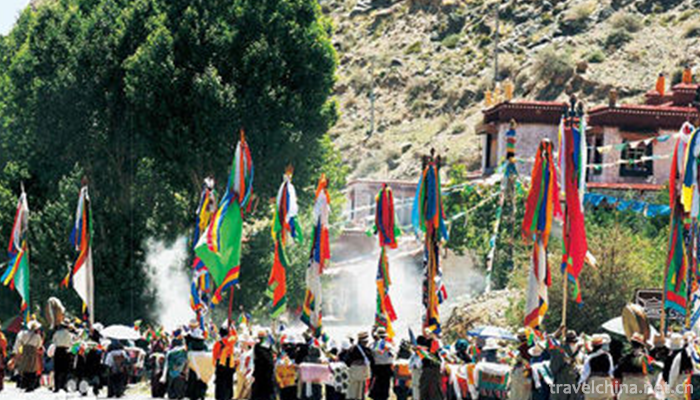
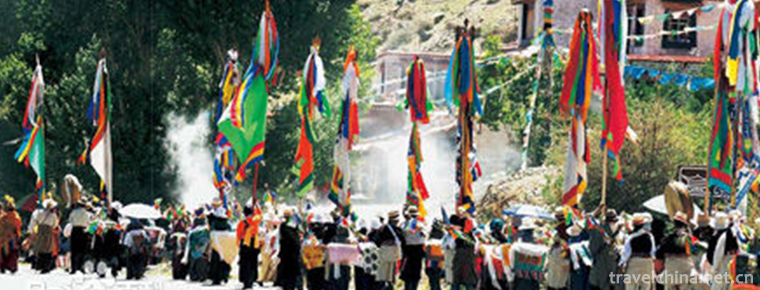
Wang Guo Festival
-
Shanghai Chen Shan Botanical Garden
Shanghai Chenshan Botanical Garden is located at 3888 Chenhua Highway, Songjiang District, Shanghai. It was opened to the public on January 23, 2011. It was built by Shanghai Municipal Government in c
Views: 190 Time 2018-12-19 -
Seoul Lake Park
Seoul Lake Park is located in Weiyang District of Xi'an City, Shaanxi Province. It is 200 meters west of the cross of Fengcheng 4th Road and Zhuhong Road. It was originally the Unity Reservoir
Views: 144 Time 2019-01-13 -
Silk Weaving Techniques
Silk weaving is a traditional Chinese handicraft with a long history. It consists of four parts: Yuhang Qingshui silk sponge production technology, Hangluo weaving technology
Views: 195 Time 2019-04-04 -
Hunan fishing drum
Fishing drum is also called tube and bamboo piano. Song Dynasty has emerged, is a popular traditional musical instrument in Hubei, Hunan, Shandong, Guangxi and other areas, often used in opera perform
Views: 201 Time 2019-05-03 -
Gold lacquer inlay decoration technique
Gold lacquer inlay decoration technology, Beijing local traditional handicraft, one of the national intangible cultural heritage.
Views: 274 Time 2019-05-07 -
Tajik Water Diversion Festival and Seeding Festival
In Tashkurgan Tajik Autonomous County of Xinjiang, Tajik Water Diversion Festival and Seeding Festival are Tajik agricultural festivals. In Tajik, the sowing Festival is called "Hamozivast"
Views: 258 Time 2019-06-17 -
Xujiaquan
Xujiaquan, a traditional boxing method, originated in Tongji Village, Xintai City, Shandong Province. Xujiaquan originated in Yongzheng Period of Qing Dynasty and was created by Xu Shengcai, Gaozu of
Views: 192 Time 2019-07-09 -
Yang Liu Qingmu New Year Print
Yangliuqing Wood Printing New Year Picture, Tianjin folk traditional art, one of the national intangible cultural heritage.
Views: 238 Time 2019-07-11 -
Yuchan mountain
Yuchan mountain is located next to Luxian County, Luzhou City, Sichuan Province. It is named for its mountain shape and stone like shape. Yuchan mountain has always been famous in South Sichuan for its secluded mountains, strange stones, beautiful waters and many cultural relics.
Views: 356 Time 2020-10-15 -
The position of Panzhihua
Panzhihua City is located at the junction of Sichuan and Yunnan in Southwest China, 26 ° 05 ′ - 27 ° 21 ′ N and 101 ° 08 ′ - 102 ° 15 ′ E. Jinsha River and Yalong River meet here. It borders Huili, Dechang and Yanyuan counties of Liangshan Yi Autonomous Prefecture
Views: 384 Time 2020-12-14 -
Geomorphological characteristics of Mianyang
The terrain is high in the north and low in the south, and the height difference is large. The northwest of Mianyang City is located in the eastern edge of the Qinghai Tibet Plateau, with high terrain and overlapping peaks. The southwest part belongs
Views: 131 Time 2020-12-14 -
Leshan post and Telecommunications
By the end of 2018, there were 253 post offices in Leshan City, with an average of one postal service network for every 50.29 square kilometers and 12900 people. There are 79 postal routes in the city, with a total length of 3490 km. There are 158 urban delivery routes
Views: 355 Time 2020-12-17
